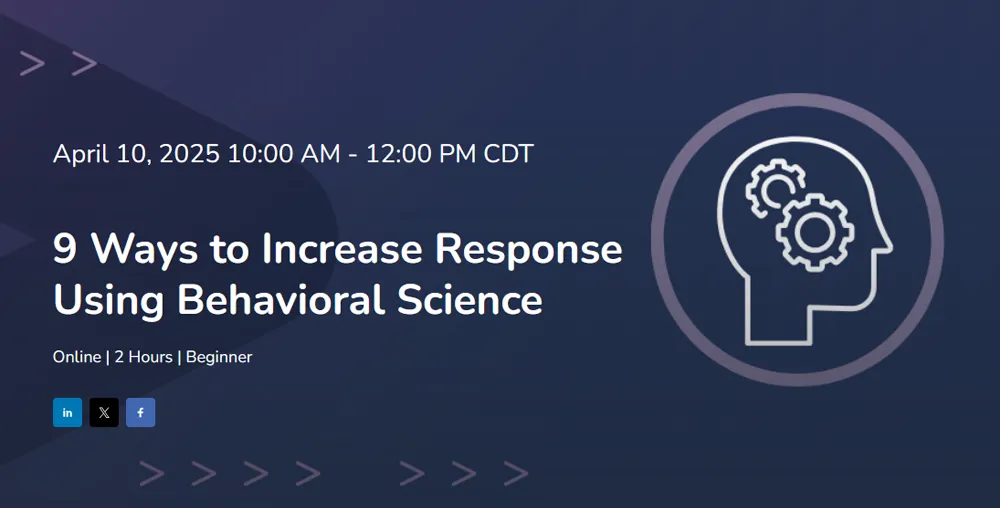As we approach the new year, Maria Gianotti, President of the American Marketing Association’s San Francisco Chapter, 2019-2020, reflects on the challenges and lessons learned running a volunteer organization.
Lesson 1: Form relationships first
When starting the 2019-2020 board year this past July, I was under the assumption that if I responded to my team members emails, texts and Slack messages as quickly as possible, I could gain the confidence and trust from my team as a responsive and reliable leader. It didn’t take long before I discovered that there are more important things than acting fast. To gain respect and trust from board members, you need to form relationships first. By taking the time to get to know your volunteers on both a personal and professional level, you’re able to learn what gets them excited and motivated. Not only does this knowledge help you become a more empowered leader, it helps you evaluate your volunteers strengths and opportunites, so you can better set your team up for success.
Lesson 2: Retain volunteers by having the right people in the right roles
Once I got better acquainted with my team members, I found that not everyone held the right volunteer positions. In some cases, volunteers had applied for board roles only because those were the roles available at the time, which may not have been the right good match. And in other cases, the positions were too similar to the ones of their profession, which made the position feel like work rather than a volunteer role. Through conversations with these individuals, I realized that in order to retain board members, it was crucial that they were content with the responsibilities given to accomplish the chapter’s goals. This meant that I had to reassign board positions after the board year had started to ensure I had the right people in the right roles. This action resulted in a win for both the board members and the chapter.
Lesson 3: People need to feel accountable
At first, I was hesitant to give board members too many responsibilities.I was afraid they would get overwhelmed, resulting in them wanting to leave the board—it is after all a volunteer position so you have the risk of people leaving. I couldn’t have been more wrong about my assumption. Even as a volunteer, people need to be held accountable for deliverables, otherwise they don’t have anything to work towards and they don’t feel valued as a member of the team. Don’t hesitate to hold people accountable for deliverables, they might not thank you for it, but they will feel appreciated.
Lesson 4: Empower individuals by enabling them to suggest the best course of action
It’s more empowering for individuals to determine the best course of action for a decision rather than solve the problem for them. This means that as a manager or leader, instead of giving an individual an immediate answer or decision when asked a question, it’s better to have the person evaluate resources available and make a recommendation. This helps the volunteer continue to learn, while also helping grow their managerial skills.
Lesson 5: Give Raising Hands emojis
Recognize your volunteer’s efforts by thanking them or providing positive reinforcement during board meetings, email, social channels or Slack. Even something as simple as giving a Raising Hands emoji 
Lesson 6: Quarterly SMART goals make it easier to measure success
Something I thought was really important coming in as president of the chapter, but was a bit hesitant to enforce considering this had not been done before, was to assign team leads to set quarterly SMART goals so they could measure success by the end of each quarter, instead of by the end of the year. By setting SMART goals that were reviewed during each board meeting, teams have been held accountable to achieve them. Having quarterly goals has not only helped the teams work towards a shared vision, but it has also helped them gain a sense of accomplishment.
Lesson 7: Don’t procrastinate difficult conversations
One can say that procrastination and difficult conversations go hand in hand, like peanut and jelly. It’s never easy to take the time out of a busy schedule to confront others, especially individuals that have no trouble leaving an unpaid volunteer position as soon as they don’t like what they hear. As a leader of a non-profit organization this is one of the most challenging, if not the most challenging issue you will come across. On one hand, you need to keep your volunteers, as good volunteers don’t grow on trees. And on the other hand you can’t refrain from having difficult conversations, as we all know not addressing issues in a timely manner causes more harm than good. Moral of the story: Don’t procrastinate difficult conversations. Problems tend to get bigger the longer you wait and you’re more likely to lose your volunteer and fail reaching a solution at a later time.
Lesson 8: Even a small token of appreciation goes a long way
Most non-profit organizations don’t have the funds to spend on expensive holiday gifts or extravagant company gatherings for their volunteers, but even a small token of appreciation goes a long way. I like to extend awards to volunteers, named the month’s “Marketing Rockstar,” who have gone above and beyond to do something good for the chapter. This effort gives me an opportunity to thank volunteers for all of their hard work and it also helps people feel encouraged to continue to strive for the chapter.
Lesson 9: Team leaders don’t grow on trees
It takes a special person to lead a team, so when you see one, encourage that person to step up to become a team lead. If you’re able to recognize or even promote these leaders, they feel empowered to grow their teams.
Lesson 10: Listen and learn
With so many different opinions at board meetings, it can be challenging to take the time to listen to what is being said and digest all the information before adding your own thoughts and opinions. Oftentimes, you speak too soon and things can easily get misinterpreted leaving less time to discuss other important agenda items. What has been helpful for me is to take notes and say that you can continue discussing the topic online. That will leave you time to digest the information and address the topic in a calm and better informed manner.
Lesson 11: Celebrate diversity
Make sure you have a diverse board of directors in terms of gender, age, skills, experience and background. Building a board that meets these criteria have proven to be how our chapter has had the best ideas come to life, as well as changes things up once in a while. There’s nothing more exciting than being able to learn from a diverse group of people that is working towards the same mission as you.
Lesson 12: Culture is more important than Robert’s Rules of Order
Yes, you want to have an efficient board meeting, but what good is having an efficient board meeting if all it does is remind your team members of work? Board culture is as important as the topics discussed during the meeting. Keep board meetings light and fun so volunteers feel like they are among a group of friends they enjoy.
These are twelve powerful lessons I learned leading the AMA SF. The question is, are you interested in joining the Board or becoming part of our volunteer organization? If so, please contact volunteer@amasf.org.









Comments are closed.